

Orissa

Parasurameswar temple
Orissa
, state in eastern India, bordered on the north by Bihâr state and Bangla state, on the east by the Bay of Bengal, on the south by Andhra Pradesh state, and on the west by Madhya Pradesh state. Orissa covers an area of 155,782 sq km (60,148) sq mi.

explanation
The coastline is largely smooth and lacks good ports. The coastal strip is narrow, level, and extremely fertile. Other natural regions in Orissa include the inland northern plateau and the Eastern Ghats. Orissa's climate is warm, with average December temperatures ranging from 16° to 28° C (61° to 82° F). In May the average temperatures range from 27° to 38° C (81° to 100° F). The state's average annual rainfall is about 1800 mm (about 70 in), with most rain falling in the north and over the Eastern Ghats.
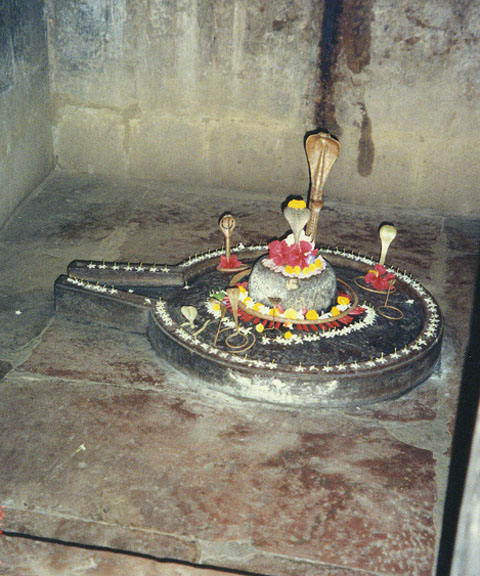
lingum decorated with offerings and snake figures
At the 1991 census Orissa had a population of 31,659,736, with an average density of 203 persons per sq km (526 per sq mi). Bhubaneshwar is the capital. The population of Orissa consists mainly of Oriya-speaking people, although Munda and Dravidian languages are also spoken. The overwhelming majority of residents are Hindu, but there are small minorities of Christians and Muslims. Important Hindu temples located in Orissa include Jagannath Temple in Puri and Sun Temple in Konarak.
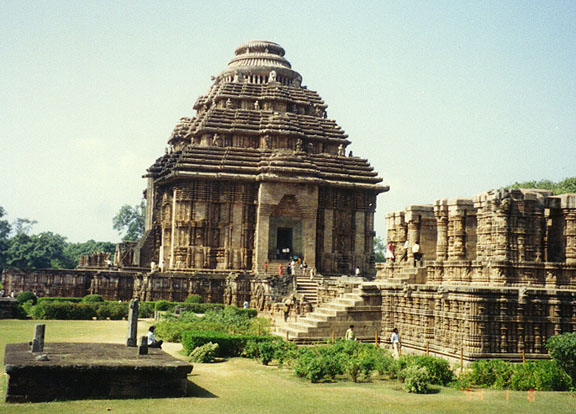
Sun Temple in Konarak

building detail
In 1991, 49 percent of the population was literate. Universities located in Orissa include Brahmapur University (founded in 1967) in Brahmapur, Orissa University of Agriculture and Technology (1962) in Bhubaneshwar, and Utkal University (1943), also in Bhubaneshwar.
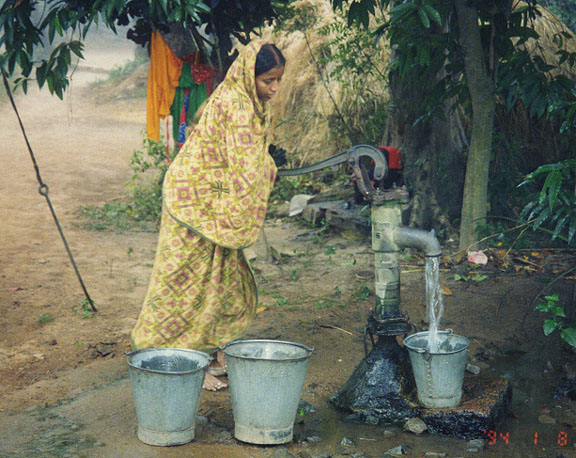
water for household use
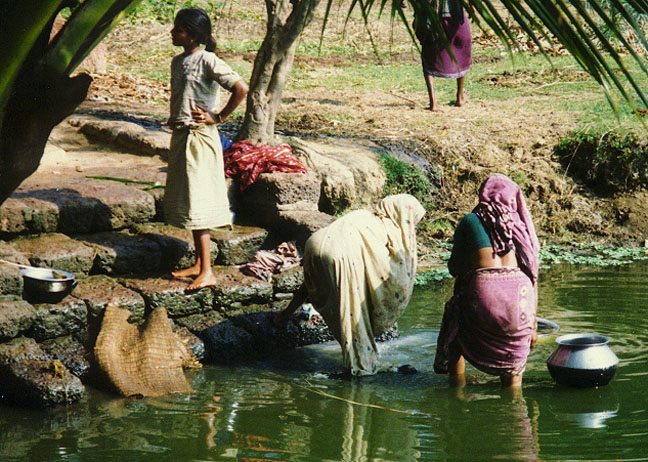
water for washing
Orissa's economy is predominantly agricultural with most of the population engaged in raising rice. Other agricultural products are pulses (legumes), cotton, tobacco, sugarcane, and turmeric. Among the livestock raised are buffalo and other cattle, sheep, and goats. Fish is largely exported. Industries include the production of pig iron and steel, the manufacture of textiles, cement, paper, glass, aluminum, flour, and soap, and the processing of sugar and oil. Hand-loom weaving and the making of baskets, wooden articles, hats, nets, and silver filigree (ornamental work) are carried on.
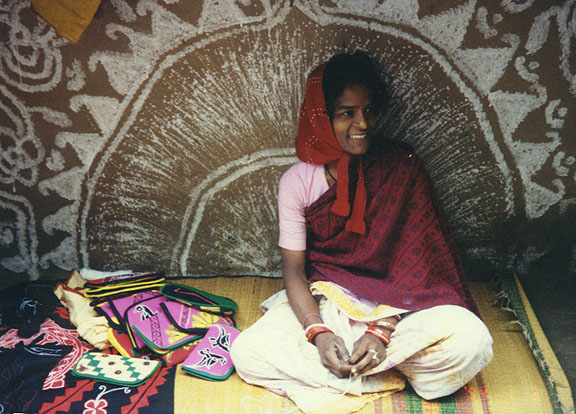
woman selling textile articles
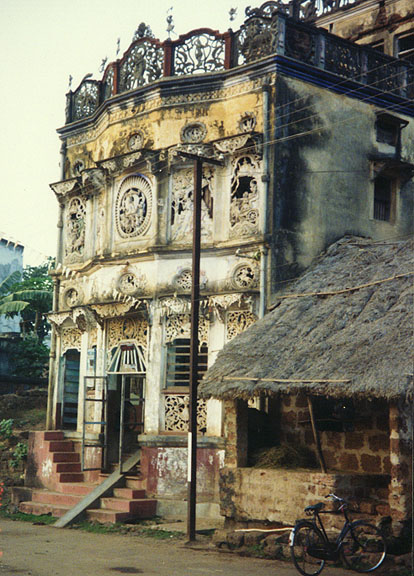
building
Orissa has a single-chamber legislative assembly with 147 seats. The state sends 31 members to the Indian national parliament: 10 to the Rajya Sabha (Upper House) and 21 to the Lok Sabha (Lower House). Local government is based on 27 districts. Orissa came under British control in 1803. In 1912 it was united as a province with Bihâr, but it became a separate province in 1936. In 1949 it became a state, with the addition of some small native states.Text from Microsoft Encarta
![]()
village of the chritrakers (painters)
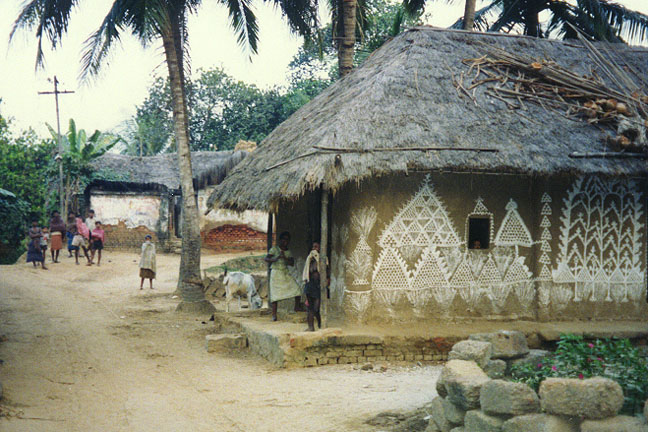
the village
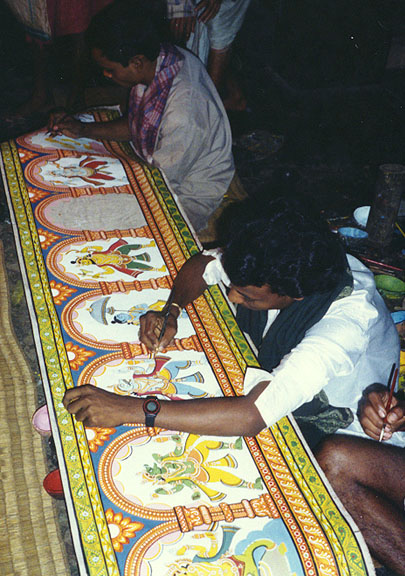
patachitras
(painting on fabric)
![]()
Nuapatna
double Ikat weaving in silk
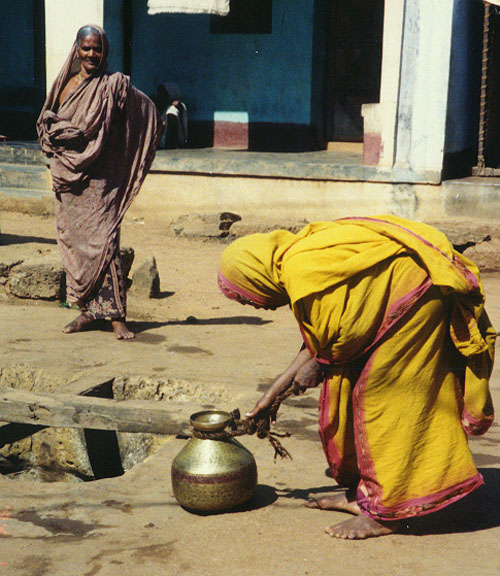
women of the village
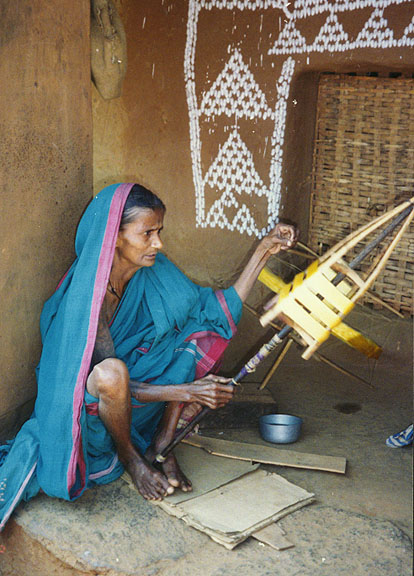
winding silk
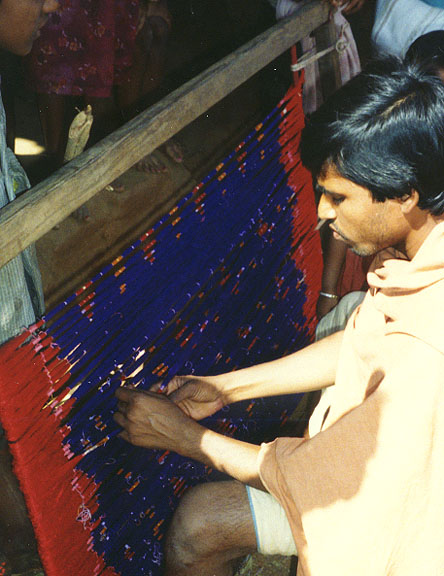
tying the double-Ikat on the warp

the double-Ikat silk cloth design
![]()
![]()
![]()